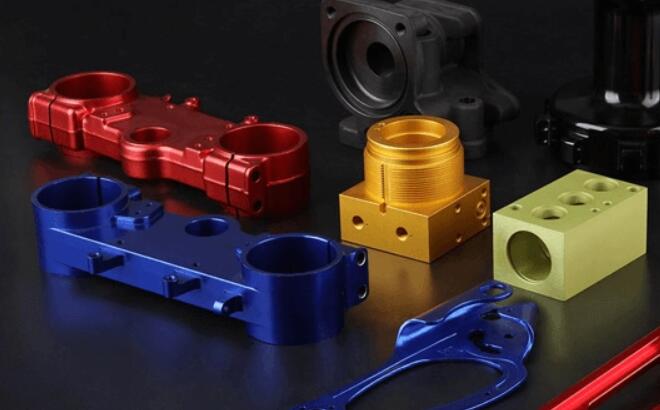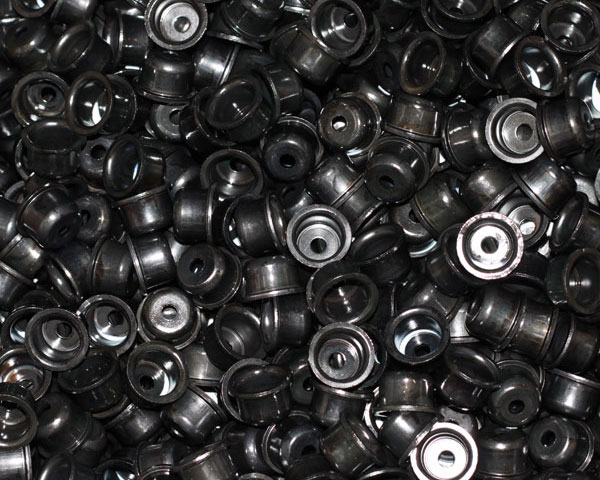When grinding parts that are made of aluminum alloy, a significant amount of heat is produced, and the debris that is produced as a result of the grinding is comparable in consistency to very fine sand. If the viscosity of the cutting fluid that is being used is too high, the wear debris will not be able to be deposited or filtered in a timely manner. This could lead to an increased risk of an accident. The effectiveness of the cutting could suffer as a result of this. Because of this, it will be more difficult to get the surface to be as smooth as is actually possible in the given circumstances. Before beginning fine or ultra-fine grinding, it is essential to select a cutting fluid that settles or a grinding fluid that has a low viscosity. Either of these two types of fluids can be used.
It is not necessary to have very high machining accuracy in order to achieve the desired results when performing routine low-speed grinding or cutting operations on components made of aluminum alloy. These operations can be carried out in order to achieve the desired results. Cutting fluids that are considered to be the industry standard are sufficient for meeting the requirements set forth by production. If you have the opportunity, you should cut the aluminum alloys with a cutting fluid that was designed with aluminum alloys in mind from the beginning. This is due to the fact that the presence of these inhibitors makes it possible to ensure that the surface of the workpiece will not be damaged. Emulsified products are oil-based products that have excellent lubricating properties but high viscosity and are not kind to the environment. Emulsified products are also known as emulsions. In some communities, products that have been emulsified are also referred to as cutting oil. They are well suited for the processing of parts made of aluminum alloys that call for a low level of workpiece precision but call for a high level of workpiece hardness. In order to achieve the effects of lubrication and the reduction of friction, as well as easy cooling and filtration, it is necessary to select products that have a viscosity that is relatively low and also contains anti-friction additives. This is because it is impossible to achieve these effects with products that have a viscosity that is significantly higher. In addition, in order to accomplish these effects, it is necessary to choose products online cnc machining service that contain anti-friction additives as they are the only ones that will do the trick.
When selecting a cutting fluid, you need to pay close attention to how effective it is at preventing rusting. This is because the cutting fluid is a product that is based on water. This is of utmost significance if the liquid contains a significant amount of water. This is the case regardless of whether the cutting fluid is made entirely of synthetic materials or only a portion of them. Because the pH value of cutting fluid is typically kept between 8 and 10, it is recommended that an aluminum anti-rust agent be used in cutting fluid during processing. This is because the pH value of cutting fluid is typically maintained between 8 and 10. This is especially the case with workpieces that have been stored for a considerable amount of time in the interim between processes.

Cutting fluids are products that are based on water and go by the names cutting fluids and fully synthetic cutting fluids, respectively. Both of these names refer to the same category of product. Grinding fluids and fully synthetic cutting fluids are two other names for cutting fluids. Grinding fluids are used for grinding metal. The process of filtration is straightforward, it achieves satisfactory levels of cleanliness, and it achieves remarkable levels of cooling efficiency. In general, the lubricating performance of products that are only partially synthetic is superior to that of products that are fully synthetic. This is because only a portion of the product is synthetic. This is due to the fact that there is only a small amount of synthetic component in the product. In the modern world, there is an ever-increasing number of applications for the numerous components that can be made from aluminum alloy. These components can be used in a wide variety of settings. This is essential in order to guarantee the high level of quality that the processing will produce. because the cutting fluid has a significant impact on both the quality and the efficiency of the processing of aluminum alloy parts, and because the quality and the efficiency of the processing are closely related to one another.
In addition, the utilization of these components is reaching unprecedented levels of prevalence. On the other hand, the texture of the aluminum alloy is quite malleable, and it possesses a high degree of plasticity as well. It is not unusual for the material being cut to cling to the knife as it is being used, which causes the cutting instrument to acquire a built-up edge as a result of the process. Welding on the knife edge can happen during high-speed cutting, which can result in the loss of the tool's ability to cut. This, in turn, affects the accuracy of the machining as well as the surface roughness. The accuracy of the machining process can suffer if the heat that is produced during the cutting process can easily cause thermal deformation of the workpiece. Because of this, selecting the appropriate cutting fluid for the processing of aluminum alloys should be given the utmost priority. It is not enough for it to be resistant to rust and have good lubricity; it also needs to have excellent cooling and the ability to be filtered. These are the conditions that must be met.

Therefore, the cutting fluid has a direct influence on both the quality of the processing and the efficiency of the processing of parts made of aluminum alloy. These two aspects of the processing are directly related to each other. If the heat that is produced is not successfully removed by the cutting fluid in a timely manner, cnc machining service a phenomenon known as sticking to the knife will take place, and even built-up edge will be observed. This is because the heat that is generated will not be successfully removed. The heat will also cause the workpiece to become deformed, which will have a significant impact on the accuracy of the workpiece. Heat will also have an impact on the precision of the workpiece. In addition to this, the heat will cause the workpiece to become misshapen as a result of its effects. Because of this, the cutting fluid that is used should be one that possesses a high level of lubricity and performs exceptionally well in terms of its performance in terms of cooling. As a result of this, the cutting fluid that is used should be one that possesses a high level of lubricity.

